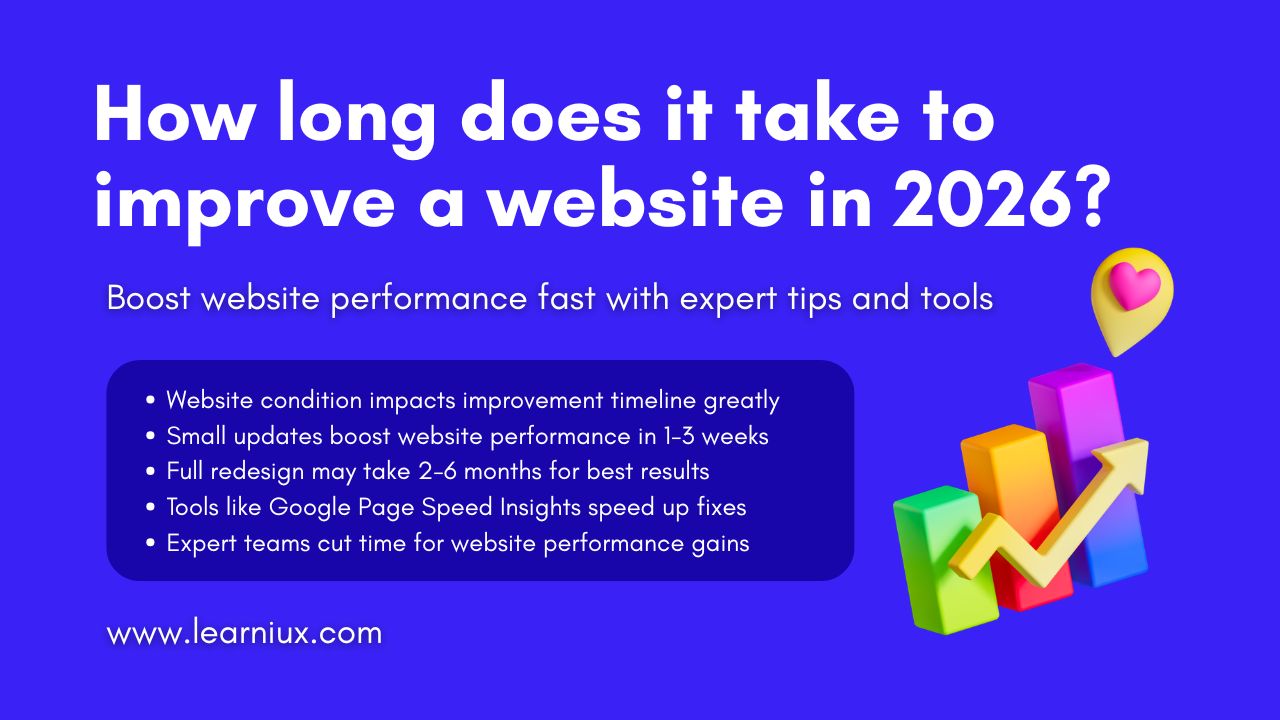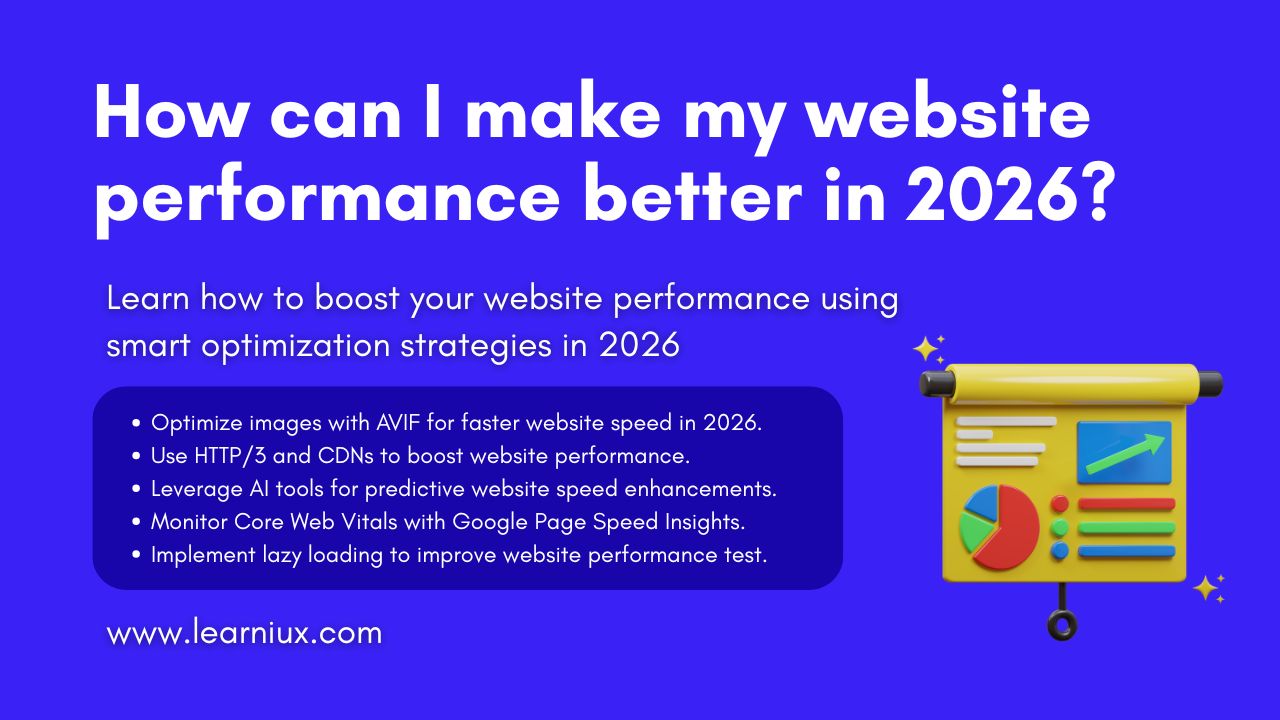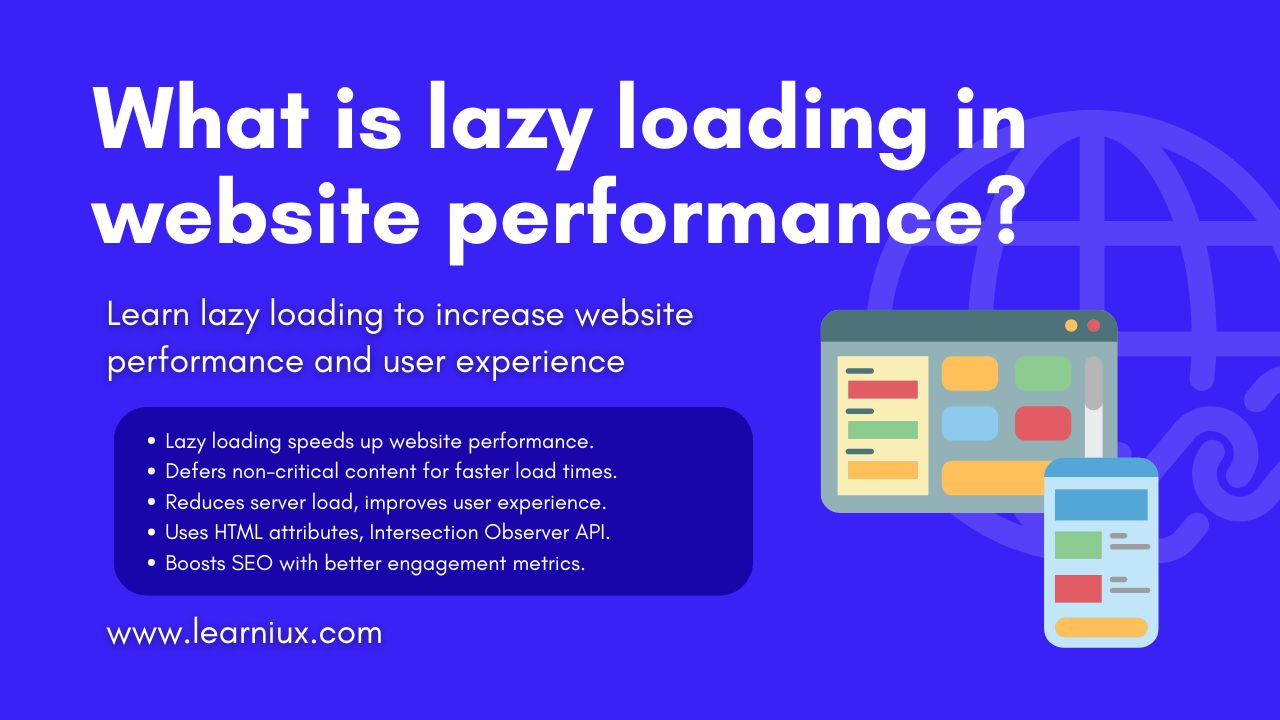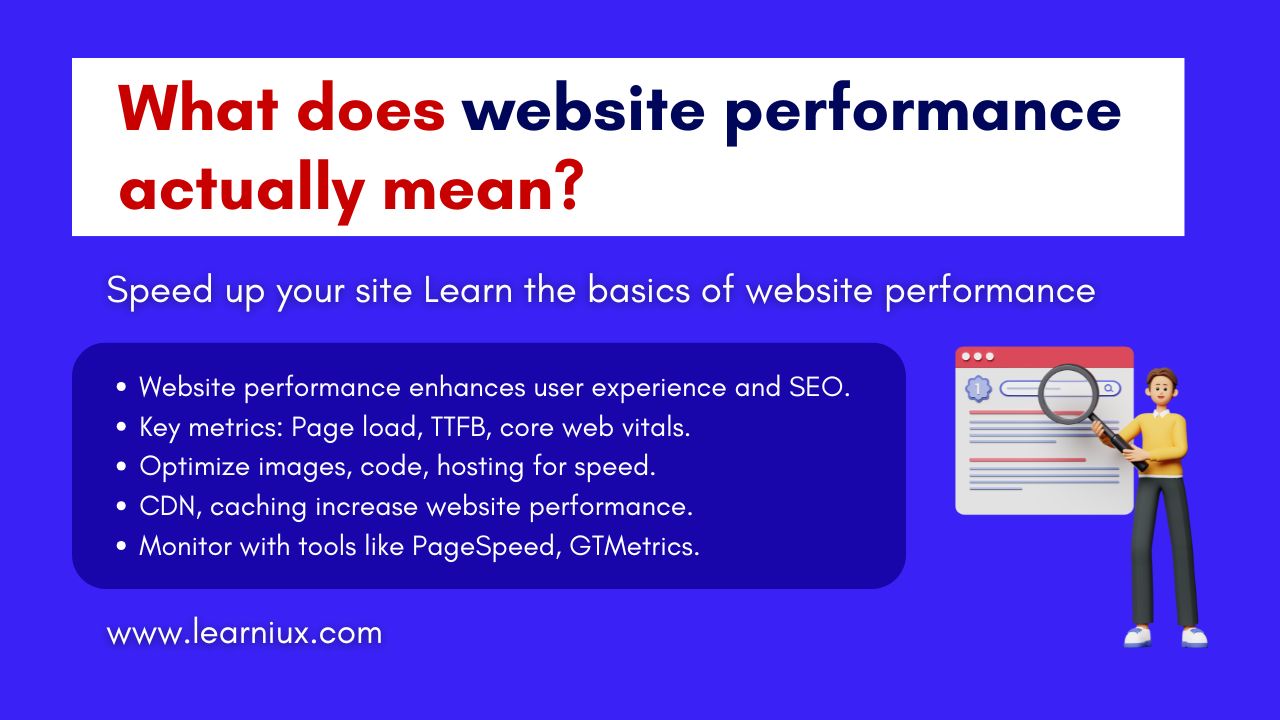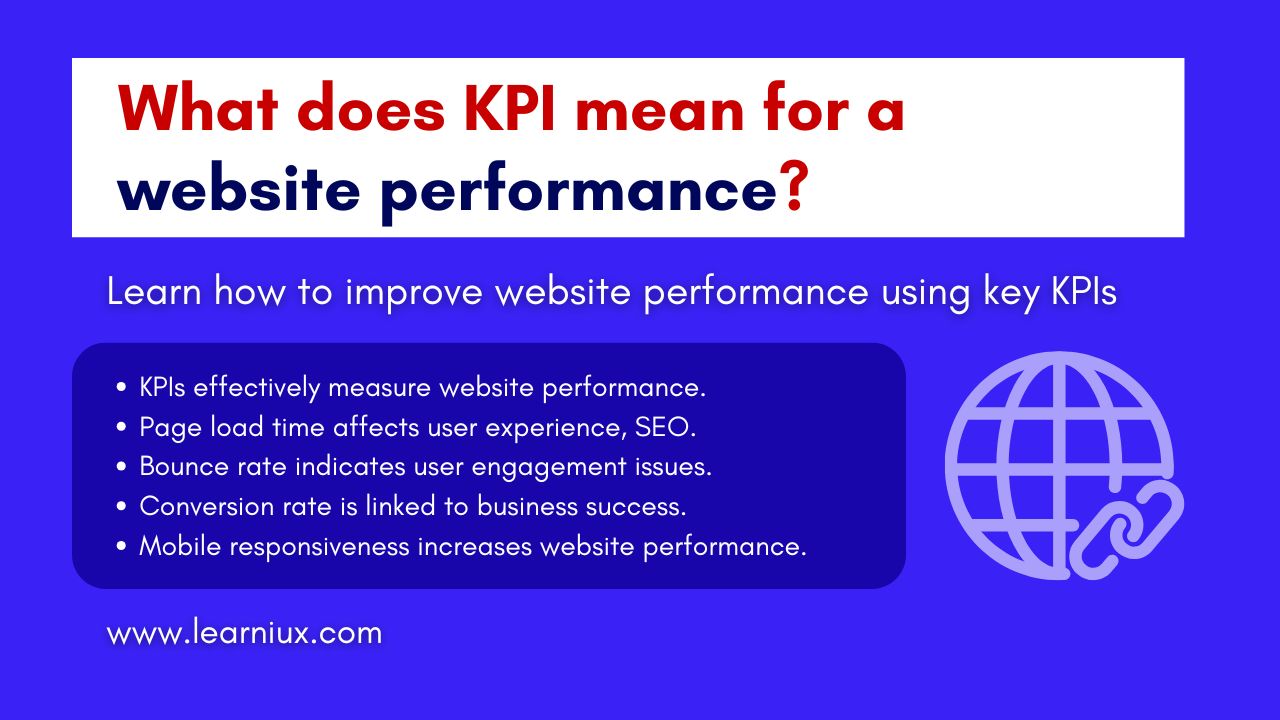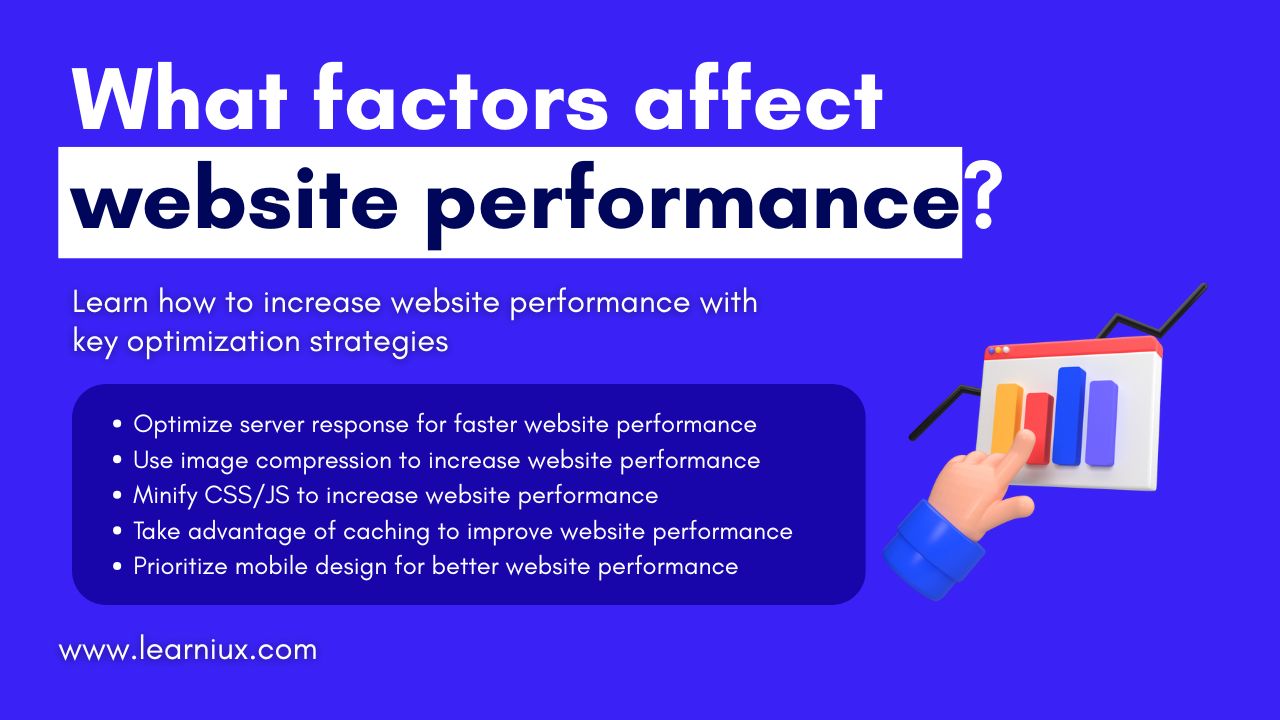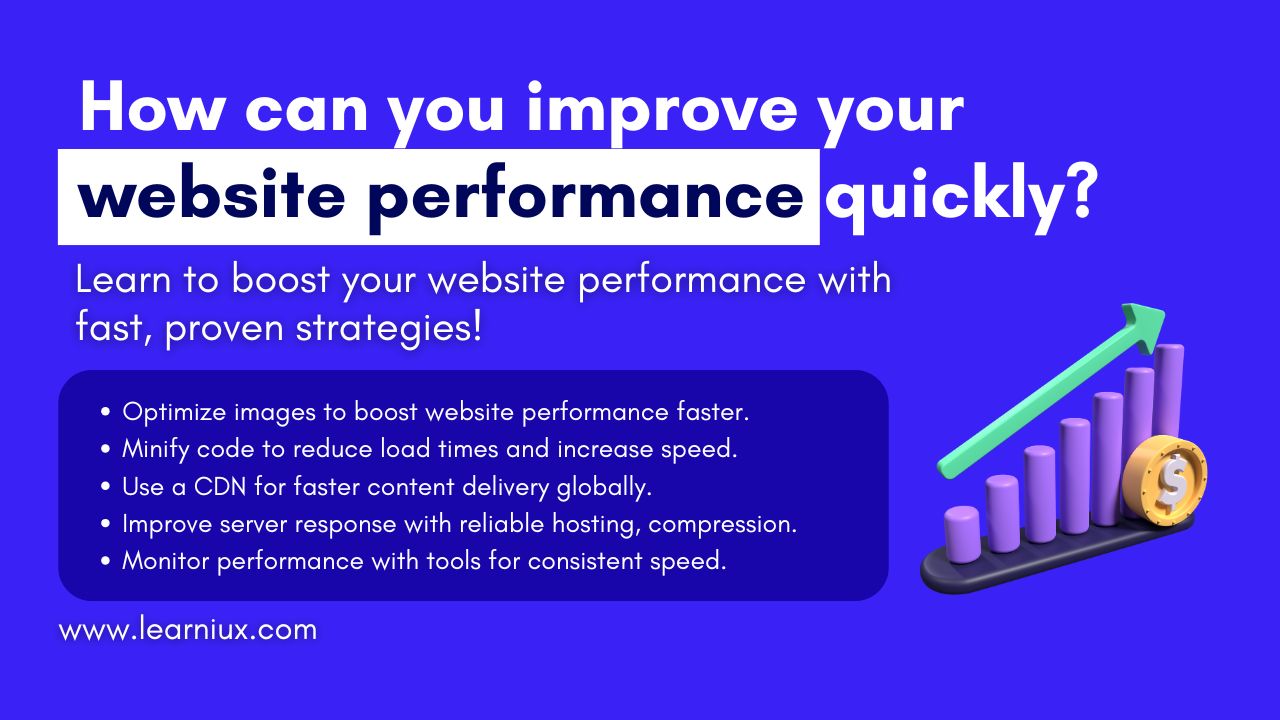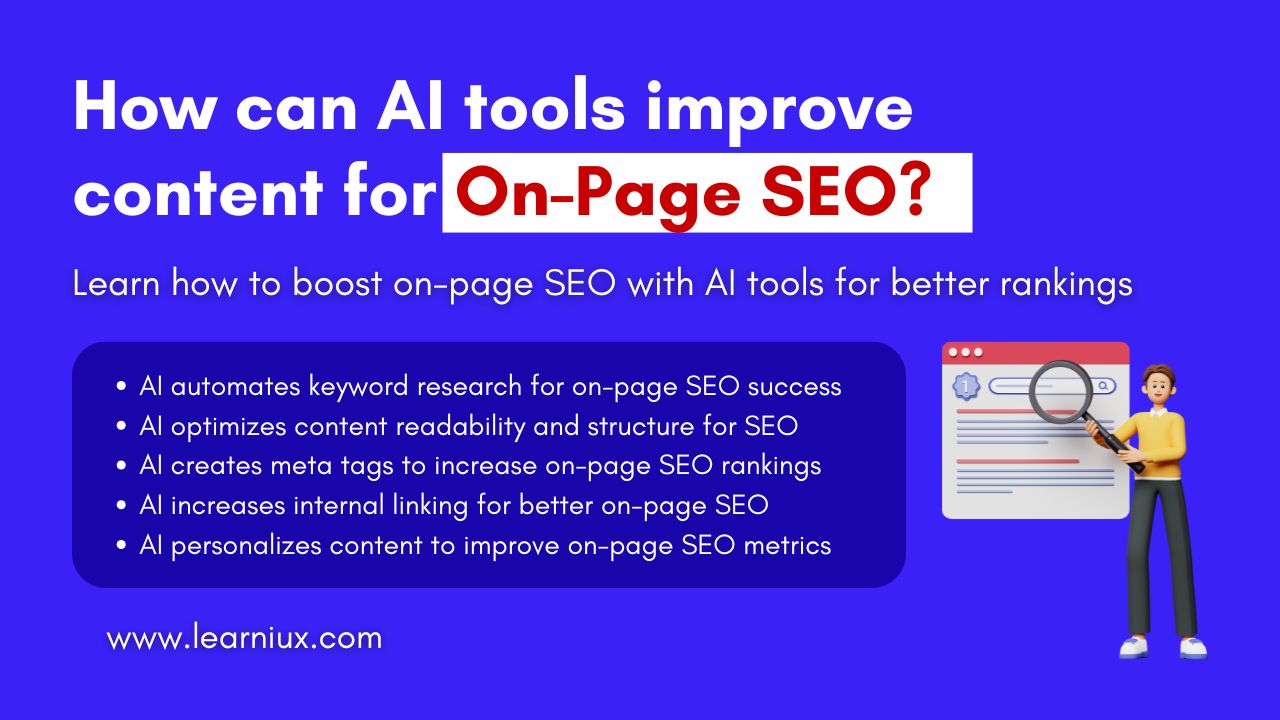Website optimization is essential for businesses, bloggers, and organizations that aim to enhance user experience, increase engagement, and increase conversions. The time it takes to improve website performance depends on factors such as the current state of the site, the scope of the changes, and the resources available. Whether you’re running a website speed test, an e-commerce platform, or a personal blog, optimizing your website’s speed and performance is critical to success. This comprehensive guide explores the process, timeline, and strategies for optimizing website performance, including using Google Page Speed Insights, Pingdom Website Speed Test, and other website speed test methods to achieve measurable results.
Factors that affect website improvement time
The time it takes to improve website performance depends on several key factors. Understanding this helps you set realistic expectations and plan effectively for your site performance testing goals.
Current website status
The starting point of your website significantly affects the time it takes. A site with an outdated design, slow page speed, or technical errors requires more effort than a well-maintained site. For example, a network speed test website with broken links, poor mobile responsiveness, or unoptimized code may require extensive improvements to improve website speed. Tools like Google Page Speed or Website Site Checker can help identify issues like high page load times or poor web page performance test results, which determine the scope of the work.
Scope of improvements
The scope of the changes needed affects how long it takes to improve website performance. Minor updates like optimizing images or running a website speed test to change content can take days. In contrast, a complete redesign with new features or improved site page speed test metrics can take months. Defining clear goals for website speed testing or website page speed testing ensures a focused approach.
Available resources
The size and expertise of your team play a key role. A dedicated team with developers, designers, and SEO experts can speed up the website performance testing process more than a solo effort. Budget is also important – hiring experts for online website analysis or using premium tools like Pingdom PageSpeed Test can speed up improvements. Limited resources can extend the timeline for achieving optimal website speed report results.
Technology complexity
Websites that use complex technologies, such as custom-built internet speed website platforms or complex CMS systems, take longer to optimize. For example, integrating Google Web Speed Test recommendations or fixing Google Site Speed Report issues on a dynamic site may involve advanced coding, extending the timeline.
Key Areas for Website Improvement
To improve website performance, focus on these key areas, each with its own timeline and impact on site speed test results.
Website Design and User Experience
A modern, intuitive design increases user engagement and reduces bounce rates. Updating visuals, navigation, or layout typically takes 2-8 weeks, depending on the scope. For example, refreshing a single page for a website for a speed test is faster than upgrading the entire Internet Site Checker platform. As measured by tools like Google Page Speed Insights, a well-designed interface improves website speed and user satisfaction.
Steps for Design Optimization
- Audit Current Design: Use a website checking site to assess user experience and identify pain points.
- Update Visuals: Modernize fonts, colors, and images to match current trends.
- Improve Navigation: Simplify menus to increase website performance test metrics.
- Test Response: Ensure compatibility across devices using a site page speed test.
Technical Optimization
Technical improvements are crucial for website speed and SEO. Key tasks include optimizing page speed, fixing crawl errors, and improving mobile responsiveness, which can take 2-6 weeks. Tools like Google Page Speed Checker or Pingdom Website Speed provide actionable insights to boost your website speed test results.
Technical Optimization Tasks
- Optimize Images: Compress images to reduce page load time without sacrificing quality.
- Minify Code: Streamline CSS, JavaScript, and HTML for faster website speed meter readings.
- Improve Server Response: Use a reliable hosting provider to boost site performance test results.
- Implement Structured Data: Boost SEO with Schema markup, improve Google Web Page Speed Insights scores.
Content Updates
High-quality, relevant content increases traffic and engagement. Depending on the volume, updating existing content or creating a new page for a speed checking website can take 1-4 weeks. Naturally incorporating keywords into content, such as website speed test or check website performance, increases SEO and website performance.
Content Optimization Strategies
- Keyword Research: Use tools like Google Page Speed Analysis to identify high-value terms.
- Refresh Old Content: Test webpage speed and update outdated posts to improve relevance.
- Create New Pages: Develop content that aligns with Google’s website speed check goals.
- Optimize Meta Tags: Increase click-through rates with compelling titles and descriptions.
Functionality and Features
It can take 4-12 weeks to add features like e-commerce capabilities, interactive tools, or integrations for the best internet speed testing website. Complex tasks such as creating custom plugins or ensuring that web page performance is checked require thorough testing to maintain website site speed testing standards.
Examples of Performance Upgrades
- E-commerce Integration: Add a payment gateway for seamless transactions.
- Interactive Tools: Implement website speed meter or internet site speed testing features.
- Custom Plugins: Develop solutions tailored to enhance check page performance.
Typical Timeline for Website Improvements
The time it takes to improve website performance varies depending on the scope of the project. Here’s a breakdown based on common scenarios:
Small Updates (1-3 weeks)
Minor changes like optimizing images, updating plugins, or fixing bugs typically take 1-3 weeks. These quick wins improve website speed report metrics and can be monitored using Google Site Speed Checker. For example, running Google’s website speed test and fixing issues like large image files can provide immediate benefits from website performance testing.
Medium Redesign (4-8 weeks)
A partial redesign, such as updating a few pages or improving site page speed test metrics, can take 4-8 weeks. This includes tasks like increasing mobile responsiveness or refreshing content to align with Google’s website speed test recommendations. These efforts balance time and impact for significant test site performance improvements.
Full Redesign (2-6 Months)
A complete redesign or rebuild, including new design, content, and functionality, can take 2-6 months. This comprehensive approach ensures long-term website performance testing success but requires careful planning. For example, a network speed test website that is undergoing a complete overhaul may need extensive web speed testing to verify the changes.
Strategies to Speed Up Website Improvements
Adopt these strategies to speed up website performance while reducing time and maintaining quality.
Prioritize high-impact tasks
Focus on tasks that have an immediate impact on website speed benefits, such as optimizing page speed or fixing critical errors. For example, using Google Page Speed Insights to fix slow page load times is a quick win. Prioritizing tasks ensures efficient progress toward site performance testing goals.
Leverage modern tools
Use website builders, CMS platforms, or automation tools to streamline development. Tools like Pingdom PageSpeed Test or Google Site Speed Report identify issues early, while performance monitoring software tracks website site speed in real-time. These tools speed up the web page performance testing process.
Collaborate with experts
Hiring skilled developers, designers, or SEO experts can help speed up website testing site improvements. Agencies that specialize in Google web speed testing or website analysis online deliver faster results without compromising on quality. For example, outsourcing page speed testing tasks to professionals ensures accurate implementation.
Use Agile Development
Adopt an agile approach to break down projects into small, manageable phases. This allows for iterative improvements, such as optimizing website speed in stages, reducing the overall timeline. Regular testing of the website for speed checks ensures that each phase is meeting the goals.
Measuring Success After Improvements
After the changes are implemented, track key metrics to assess website performance. Use tools like Google Page Speed Insights, Pingdom Website Speed, or the Website Speed Test platform to monitor page load times, bounce rates, and organic traffic. Regularly monitor website efforts starting within a few days of implementation, ensuring that improvements align with web performance goals.
Key metrics to track
- Page load time: Use Google Page Speed Test to measure speed improvements.
- Bounce rate: Monitor user engagement with Website Inspection Site Tools.
- Organic traffic: Track SEO performance using Google Page Speed Test Insights.
- Conversion rate: Assess business impact with website page speed data.
Recommended tools
- Google Page Speed Insights: Provides detailed page speed test reports and actionable recommendations.
- Pingdom Website Speed: Provides comprehensive website speed reports and performance insights.
- GTmetrix: Combines site speed tests and web page performance tests for in-depth analysis.
- Web.dev: Provides best practices for Google page speed analysis and optimization.
Common Challenges and Solutions
There are challenges to improving website performance that can increase downtime. Here’s how to address them:
Challenge: Slow page load times
Slow page speeds frustrate users and hurt SEO. Use Google Page Speed Checker to identify issues like unoptimized images or heavy scripts. Solutions include compressing files, enabling browser caching, and using a content delivery network (CDN) to improve website site speed test results.
Challenge: Mobile responsiveness
With mobile traffic dominating, poor responsiveness can lead to poor website speed Google scores. Test mobile performance with Google Site Speed Test and ensure responsive layouts. This can take 2-4 weeks but results in a significant increase in site performance test metrics.
Challenge: SEO Optimization
Low search rankings hinder traffic. Perform online website analysis to optimize keywords, meta tags, and structured data. Tools like Google Web Page Speed Insights help align content with website speed goals, usually taking 2-6 weeks.
Real-World Examples
Example 1: E-commerce Website
An e-commerce site used Google Page Speed Insights to identify that large images were slowing down page load times. By compressing images and minifying code, the team improved website speed in 2 weeks, increasing conversions by 15%.
Example 2: Blog Platform
The site underwent a moderate redesign of the blog platform, focusing on page speed test metrics and content updates. Using Pingdom PageSpeed Test, the team optimized page speed and mobile responsiveness in 5 weeks, which increased organic traffic by 20%.
Example 3: Speed Test Website
The Net Speed Test website needed a complete overhaul to integrate new Internet Site Speed Test features. The project took 4 months, including Google Site Speed Report optimization, but resulted in a 30% increase in user retention.
Conclusion
The time it takes to improve website performance depends on the condition, scope, and resources of the website. Small updates like optimizing page speed or fixing bugs take 1-3 weeks, while medium redesigns take 4-8 weeks. A full overhaul, including website speed tests and functionality upgrades, can take 2-6 months. By prioritizing tasks, using tools like Google Page Speed Insights and Pingdom Website Speed, and collaborating with experts, you can efficiently track improvements in website performance. Regular monitoring with a website speed meter or Test Website for Speed leads to long-term success, keeping your site competitive and user-friendly in a rapidly evolving digital landscape.
FAQs
What factors affect the time it takes to improve website performance?
The time it takes to improve website performance depends on the current state of the website, the scope of the changes, and the resources available. Outdated designs or technical issues, such as slow page speed, require more effort than a well-maintained site. Minor updates like optimizing images can take a few days, while a full redesign can take months. The complexity of features, such as adding e-commerce tools, also increases the timeline. A skilled team with access to tools like Google Page Speed Insights can speed up the process. Budget constraints can limit hiring experts, slowing down progress. Defining clear goals ensures actionable improvements. Regular monitoring with tools like Pingdom helps track progress. Collaborating with professionals accelerates website performance improvements. Ultimately, a structured plan aligns the timeline with your goals.
How long does it take to optimize website speed?
Depending on the issues identified by the website speed test, it usually takes 1-4 weeks to optimize website speed. Tasks such as compressing images, minifying code, and improving server response times tend to be the fastest. Tools like Google Page Speed Checker identify specific bottlenecks such as large files or unoptimized scripts. Complex sites such as a network speed test website may require additional time for advanced fixes. For example, implementing a content delivery network (CDN) can significantly increase page load times. Testing mobile responsiveness is also important, as it affects the user experience. Regular checks with a website speed meter ensure consistent performance. A skilled developer can effectively speed up these tasks. Continuous maintenance after optimization maintains the website’s performance. Clear prioritization of speed-related tasks reduces the overall timeline.
Can small updates significantly improve website performance?
Yes, small updates can significantly increase website performance in 1-2 weeks. Tasks like optimizing images or fixing broken links improve page speed and user experience. Tools like Google Page Speed Insights identify quick fixes that boost website speed test results. Updating plugins or removing unnecessary scripts effectively reduces load times. These changes require minimal effort but offer measurable improvements. For example, compressing images can reduce bounce rates on a website for speed testing. Regular maintenance leads to consistent performance gains. Small updates are ideal for budget-conscious projects. Monitoring with a website speed report tracks their impact. Overall, these quick wins increase the efficiency of examining website performance metrics.
How does a website redesign impact the improvement timeline?
A website redesign can take 4-12 weeks, depending on the scope, which can significantly impact website performance. A partial redesign, such as updating a few pages, is faster than a full overhaul. Tasks include refreshing the visuals, improving navigation, and ensuring mobile responsiveness. Tools like the Google Site Speed Test Guide Design Options are included to optimize page speed. Complex redesigns, such as the Internet Site Checker, require additional testing time. Collaboration with designers and developers speeds up the process. Budget and team size also affect the timeline. Regular website speed tests ensure that the redesign is meeting performance goals. Post-redesign monitoring tracks user engagement improvements. A clear plan reduces delays and increases website performance.
Which tools are best for measuring website performance improvements?
Tools like Google Page Speed Insights, Pingdom Website Speed, and GTmetrix are ideal for measuring website performance. Google Page Speed Checker provides detailed page speed test reports and actionable insights. Pingdom provides comprehensive website speed reports by analyzing load times and bottlenecks. GTmetrix combines site speed testing and web page performance testing for in-depth analysis. Web.dev Check provides best practices for optimizing website speed metrics. These tools help track page load times, bounce rates, and SEO performance. Regular use ensures that improvements are aligned with goals. For example, Website Speed Meter effectively monitors real-time changes. Combining multiple tools provides a holistic view of website performance test results. Consistent monitoring ensures sustainable improvements.
How can I speed up the website improvement process?
To speed up website improvement, prioritize high-impact tasks like optimizing page speed and fixing errors. Use tools like Google Page Speed Insights to identify quick wins like image compression. Using modern tools like CMS platforms or automation software streamlines development. Hiring online experts for website analysis speeds up complex tasks. An agile approach, breaking projects into phases, ensures iterative progress. Regular website speed tests efficiently track improvements. Collaborating with a skilled team significantly reduces delays. Monitoring with website speed reports ensures alignment with goals. Avoiding scope creep keeps the timeline on track. These strategies increase website performance quickly and effectively.
Why is mobile responsiveness important for website performance?
Mobile responsiveness is important for website performance as most users access sites via mobile devices. Non-responsive sites lead to high bounce rates and poor user experience. Tools like Google Site Speed Test assess mobile performance, identifying issues like slow page load times. Mobile optimization, such as using adaptive layouts, takes 2-4 weeks but increases website speed. Responsive design improves SEO rankings, as search engines prioritize mobile-friendly sites. Regular site page speed tests ensure consistency across devices. For example, network speed tests require websites to load faster on mobile to retain users. Monitoring with a website speed meter tracks responsiveness improvements. Improved mobile performance increases engagement and conversions. This is a key factor in measuring the success of website performance.
How often should I monitor website performance after improvements?
Website performance monitoring should begin immediately after improvements and continue regularly. Tools like Google Page Speed Insights and Pingdom Website Speed provide real-time website speed test data. Weekly checks for the first month ensure that the changes are effective. Monthly monitoring thereafter tracks long-term page speed test results. Key metrics include page load times, bounce rate, and organic traffic. A website speed report helps identify any new issues immediately. For dynamic sites like internet speed websites, more frequent checks may be required. Continuous monitoring ensures constant monitoring of website speed performance. Data-driven adjustments keep the site competitive. Regular analysis maintains optimal website performance over time.
What are the challenges that can increase website improvement time?
Challenges such as slow page speed, poor mobile responsiveness, or complex integrations can increase the time for website performance improvements. It takes time to fix unoptimized images or heavy scripts, which are identified by website speed tests. Limited resources or a small team significantly slows down progress. Scope creep, where additional tasks are added, delays completion. Technical issues, such as server limitations, affect website speed meter readings. Using tools such as Google Page Speed Checker can help identify these issues early. Lack of expertise may require hiring specialists, adding time. Regularly checking website performance tests reduce delays by tracking progress. Clear planning and prioritization effectively mitigate these challenges. Addressing them promptly ensures a smooth improvement process.
How do I know if my website improvements are successful?
Success is measured by improved metrics such as page speed, user engagement, and conversions, which are tracked by website performance testing tools. Google Page Speed Insights provides detailed page speed test reports to assess load times. Lower bounce rates and increased organic traffic indicate a better user experience. Tools like Pingdom Website Speed provide insight into website speed report improvements. Higher conversion rates indicate business results, especially for e-commerce sites. Regular website speed tests ensure that there is a consistent increase in performance. Monitoring with a website speed meter tracks changes in real-time. Comparing data before and after the improvement confirms success. User feedback also highlights usability improvements. Consistent analysis of website performance ensures long-term success.
How does content quality affect website performance improvement time?
Content quality directly impacts website performance, with updates typically taking 1-4 weeks to complete, depending on volume and complexity. High-quality, relevant content drives traffic and engagement, improving SEO rankings. Tools like Google Page Speed Insights can highlight content-related issues that impact page speed. Rewriting old posts or creating new pages with keywords like Website Speed Test can enhance the user experience. Optimizing meta tags and headings keeps users engaged longer. For websites, new content keeps users engaged longer. Conducting a content audit using a website checking site can identify gaps early. Skilled writers can speed up the process significantly. Regular updates maintain website performance over time. Monitoring with a website speed report ensures that content is aligned with performance goals.
What role does SEO play in the website improvement timeline?
SEO is crucial to website performance, with optimization tasks taking 2-6 weeks depending on the site’s needs. Using tools like Google Page Speed Checker, you can identify SEO issues such as slow page speed or missing meta tags. Keyword optimization such as website speed testing improves search rankings. Structured data implementation increases Google Web Page Speed Insights scores. Regular site page speed tests ensure that SEO efforts are aligned with performance goals. For Internet Site Checker, SEO increases user retention and traffic. A comprehensive SEO strategy requires ongoing effort but yields long-term benefits. Collaborating with SEO experts speeds up the process. Monitoring with a website speed meter tracks ranking improvements. A well-executed SEO plan reduces the overall improvement time.
How long does it take to fix technical errors affecting website performance?
Technical errors affecting website performance typically take 1-4 weeks to resolve, depending on their severity. Issues such as broken links or slow server responses identified by a website speed test require quick fixes. Tools like Google Page Speed Insights detect errors such as unoptimized scripts or images. For complex sites like a network speed test website, server-side issues can take longer to resolve. Implementing browser caching or a CDN can significantly improve website speed. Regular testing with Website Checker ensures that errors are caught early. A skilled developer can resolve issues efficiently. Post-fix monitoring with a website speed report validates improvements. Prioritizing critical errors speeds up the process. Consistent monitoring maintains long-term website performance.
Can hiring an agency significantly reduce the time it takes to improve website performance?
Hiring an agency can significantly reduce the time it takes to improve website performance, often reducing the time frame to 3-8 weeks. Agencies bring in expertise in online website analytics and tools like Pingdom website speed. They identify issues early using Google Site Speed Test and implement solutions efficiently. For example, optimizing page speed for a website is faster with professional resources for speed testing. Agencies handle complex tasks like custom integrations or SEO optimization. Their access to advanced tools ensures accurate website speed meter readings. Collaboration streamlines design, content, and technical updates. Regularly reviewed website performance reports effectively track progress. Budget considerations can influence agency selection. Overall, professional expertise accelerates high-quality website performance improvements.
How does user feedback impact website improvement timelines?
User feedback shapes website performance improvements, adding 1-3 weeks to gather insights and implementation. Feedback highlights issues like poor navigation or slow page speeds, which tools like Google Page Speed Insights can miss. For speed checking websites, user complaints about load times are prioritized for specific fixes. Surveys or analytics on website checking sites provide actionable data. Testing changes with a site page speed test is essential to incorporate feedback. Fixing usability issues increases user satisfaction and retention. Developers can iterate quickly based on clear feedback. Regular monitoring with a website speed report ensures alignment with user needs. Feedback-driven changes improve website speed metrics effectively. Continuous user input refines the improvement process over time.
How does hosting affect website performance improvement?
Hosting quality has a significant impact on website performance, with upgrades taking 1-3 weeks to implement. A poor hosting provider slows down page speed, affecting website speed test results. Switching to a reliable host or CDN improves server response time. Tools like Google Page Speed Checker identify hosting-related bottlenecks. For a fast website, fast hosting improves user experience. Upgrading your hosting requires migrating data, which requires careful execution. Testing with a website speed meter verifies performance gains. Skilled teams can minimize downtime during transitions. Regular monitoring ensures consistent monitoring of website performance. Choosing a high-quality host reduces future improvement timelines.
How long does it take to integrate new features for website performance?
Integrating new features to enhance website performance takes 4-12 weeks, depending on the complexity. Features like e-commerce tools or interactive elements like a website speed meter require coding and testing. For a website, strong integration is required to add real-time analytics. For tools like Google Web Speed Test Guide Feature Optimization for Speed. Complex integrations like payment gateways require a full website speed test. Developers ensure compatibility across devices, which impacts page speed test results. Collaboration with experts speeds up the process significantly. Regular monitoring with website speed reports tracks feature performance. Clear planning reduces delays during integration. Successful features effectively increase the scrutiny of website performance metrics.
Why is regular maintenance important for website performance?
Regular maintenance maintains website performance, updates take 1-2 weeks from time to time. Maintenance tasks like updating plugins or optimizing images prevent page speed slowdowns. Tools like Pingdom Website Speed identify issues before they impact users. For websites requiring speed tests, consistent monitoring maintains reliability. Regular website speed tests catch new errors early. Content updates keep the site relevant, increasing SEO rankings. Monitoring with website speed reports tracks long-term performance trends. Maintenance prevents costly repairs, saving time. A dedicated team ensures fast execution of tasks. Ongoing efforts maintain optimal inspection website performance standards.
How does website complexity affect the improvement timeline?
Website complexity significantly increases the improvement timeline for complex sites, up to 2-6 months. Complex platforms like network speed test websites require advanced coding and testing. Features like dynamic content or custom plugins require a full website speed test check. Tools like Google Page Speed Insights highlight bottlenecks related to complexity. Simple sites with static pages take less time to optimize. Skilled developers can simplify tasks using online website analytics. Regular site page speed tests ensure consistency between updates. Budget and team size also affect the timeline. Monitoring with a website speed meter effectively tracks progress. Simplifying features where possible reduces improvement time.
How can automation tools help improve website performance faster?
Automation tools can reduce website performance improvement timelines by simplifying tasks to 2-6 weeks. Tools like Google Page Speed Checker automate the detection of issues like slow page speed. Automated image compression or code minification reduces manual effort. For website checkers, automation ensures consistent website speed test results. CMS plugins simplify content updates while increasing SEO efficiency. Tools like Pingdom Website Speed provide real-time performance insights. Automation reduces human error during complex integrations. Regular checks of website performance reports confirm automated fixes. Combining tools with expert monitoring increases efficiency. Automation significantly speeds up high-impact website performance improvements.

